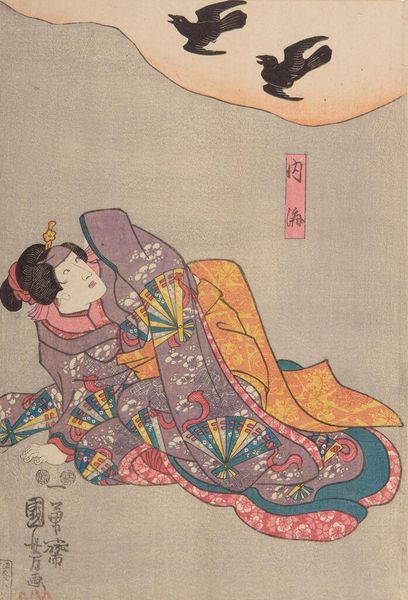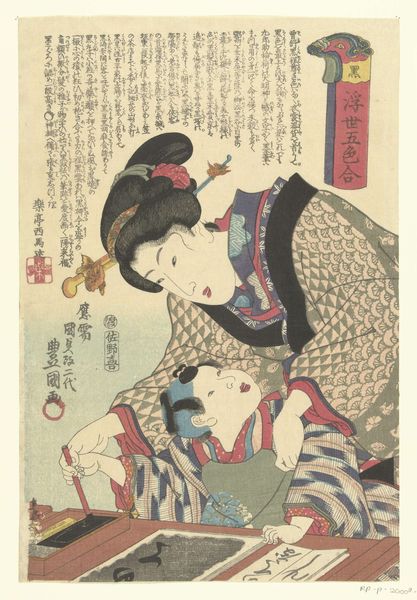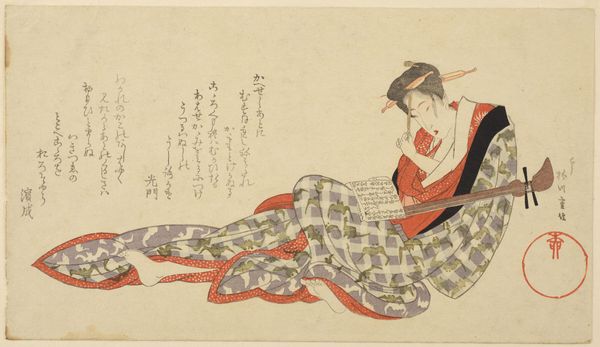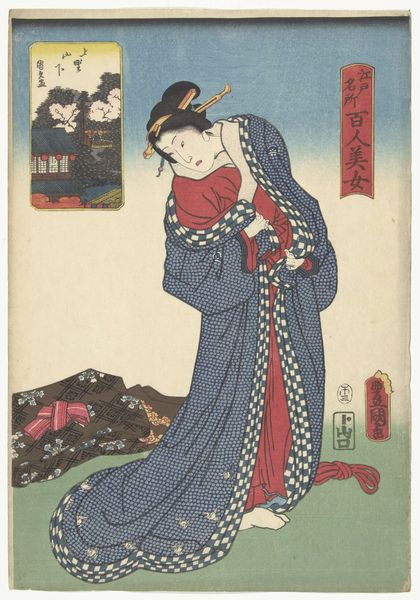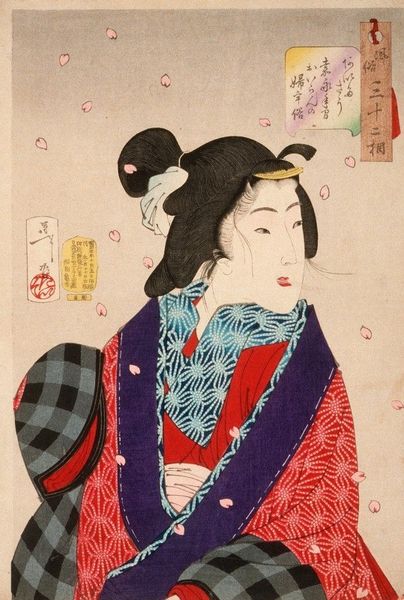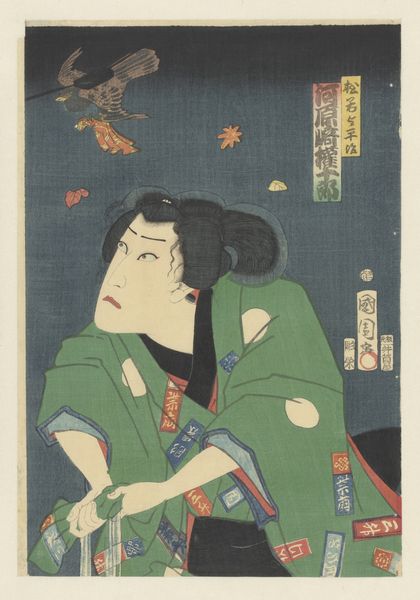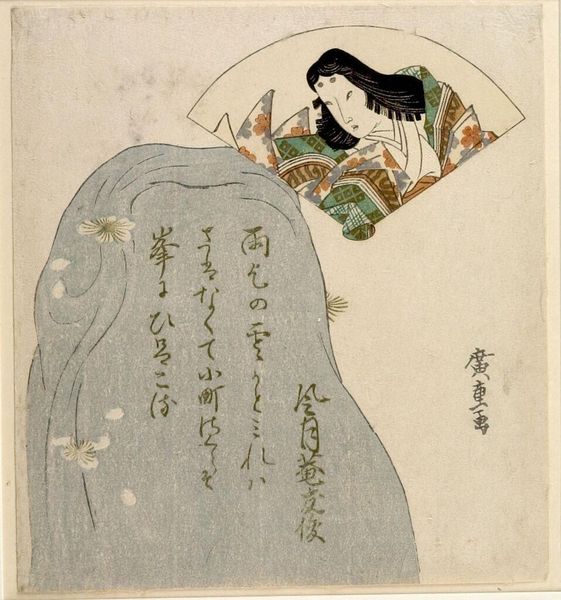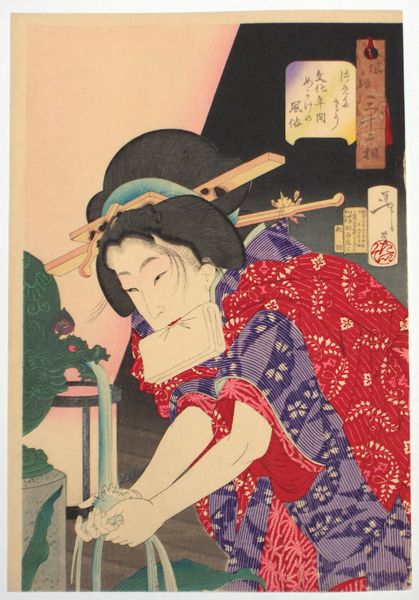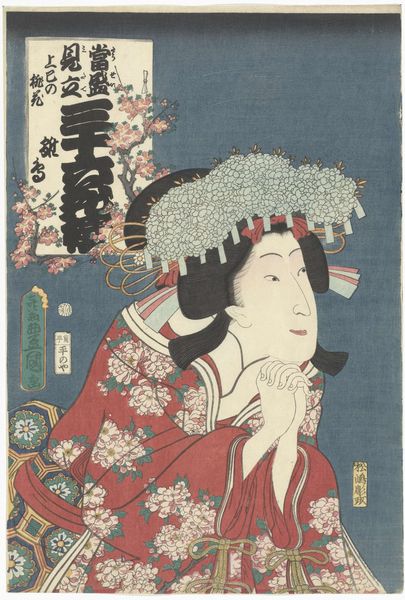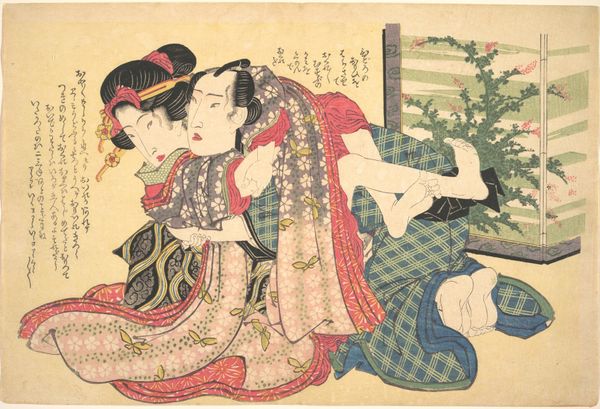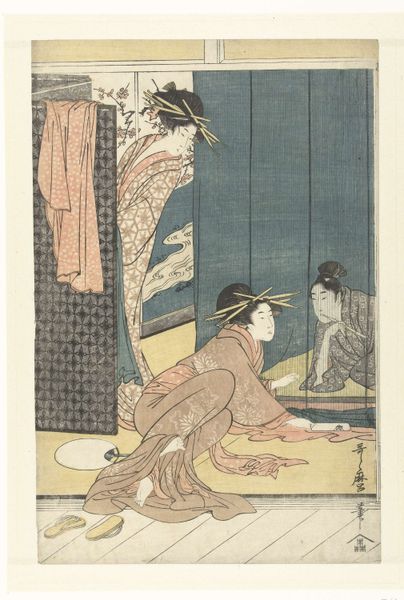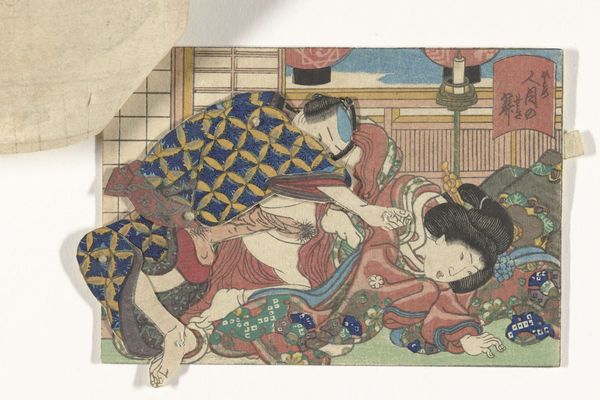
print, woodblock-print
#
portrait
# print
#
ukiyo-e
#
woodblock-print
#
romanticism
#
nude
#
erotic-art
Dimensions: height 168 mm, width 378 mm
Copyright: Rijks Museum: Open Domain
Curator: "Minnend paar," created by Kitagawa Utamaro between 1790 and 1806. This woodblock print, currently housed here at the Rijksmuseum, captures a very intimate moment. Editor: It's so… vulnerable. There’s a palpable sense of tenderness, yet the stylization distances us, doesn't it? Almost like observing a carefully staged tableau. Curator: Utamaro was a master of Ukiyo-e, "pictures of the floating world." The print would have been relatively accessible. What appears "staged" to us now would have been stylish and contemporary, meant for circulation. We need to understand Ukiyo-e in terms of its function, its means of production – the woodblock carving process, the inks, the labor involved in its distribution. Editor: Precisely. These images weren’t simply representations; they actively shaped social perceptions of beauty and sexuality. How are gender and power dynamics at play here? It’s a deliberately constructed vision, potentially reinforcing certain ideals, or even subverting expectations about the erotic, in a highly codified manner. The gazes averted, the layered robes – what statements do they make, when taken within social structures of 18th century Japan? Curator: Note the textures achieved through the printmaking process. See how the lines define the fabric patterns, contrasting the solid planes of skin? We could also speculate on the availability, the cost, the distribution networks of particular dyes and papers within this system of image production. Editor: The symbolism embedded in those fabrics! The patterns would undoubtedly hold specific cultural meanings, signalling status, occasion, perhaps even emotional states that deepen a reading of identity and lived experience for its figures. Curator: Exactly! And thinking of this artwork within a larger discussion on erotic art forces questions: how does a shift from private act to a mass-produced, relatively democratized item alter both its significance, as well as how pleasure can be received or purchased? Editor: Thinking about it that way, this small piece becomes such an immensely complex snapshot. Curator: Indeed. It offers rich points for engaging materiality as a social commentary, too. Editor: This makes us consider not only the visual artistry, but its broader reach to explore intersectionality and historical interpretation.
Comments
No comments
Be the first to comment and join the conversation on the ultimate creative platform.
